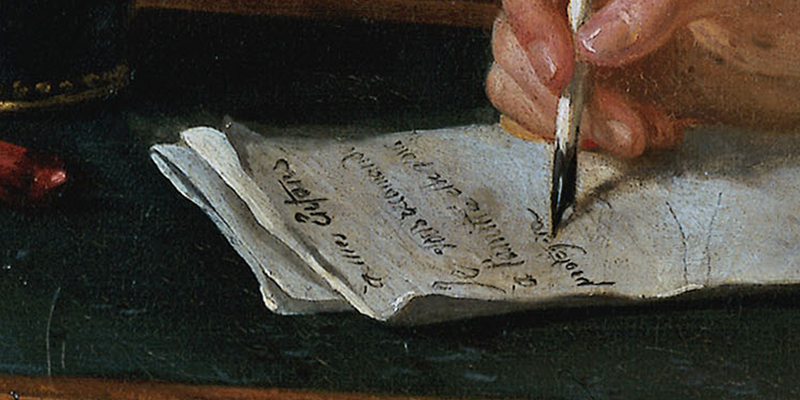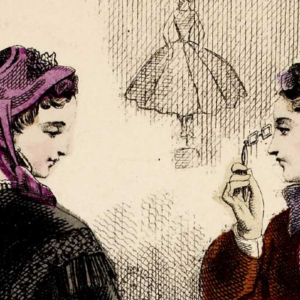“People should be interested in books, not their authors.”—Agatha Christie
A couple of years ago, on the sun-drenched Amalfi Coast when it was climate-change hot outside, I had a thought (Okay, I had many thoughts, but mostly—why did I think it was a good idea to go to Italy in July?). My husband and I were halfway through a ten-day tour and our conversation was wandering, as it tends to do when we’ve spent that much uninterrupted time together, into random topics.
I talk a lot—maybe that’s why I’m a writer?—and my thoughts sometimes skip like stones across a flat pond. In between Coke Zero’s and Aperol Spritzes (By the time the trip was over I was half Coke Zero and half Aperol Spritz), my thoughts turned to Agatha Christie. And more specifically, why anyone would ever invite Miss Marple anywhere? Had no one noticed that every time she went on vacation, someone died?
Oh! Now there was a book title! I stopped talking for an hour or so, my mind pulled inward, spinning through the various possibilities of what story I could tell with a title like Every Time I Go on Vacation, Someone Dies. Because I knew I had something, I just wasn’t sure what.
After a couple of hours of internal monologue (Did you know that a huge percentage of people have no internal monologue? I am all internal monologue.) where I’m sure my husband thought I was having some kind of stroke that rendered me silent, I settled on a story about a writer surrounded by literary rivals and her all-too-real protagonist whom she wanted dead. It would be set in Italy, of course, and as the I in the title suggests, it would be written in very close first-person with fourth-wall breaking and footnotes. Once I got home and started writing it, the book came more easily than anything I’ve written before, even though it was quite different from the thrillers I’ve been writing for years, or the rom-com I wrote before that.
I didn’t stop then to wonder then why that was, but I think I’ve found the root of it.
I grew up in a house full of books. But not just any books—detective fiction lined our floor-to-ceiling bookshelves, tattered paperbacks that had been reread so many times the spines were starting to give. Agatha Christie, Rex Stout, and Sue Grafton were my companions from age 12 after I graduated from L.M. Montgomery and Flowers in the Attic (It was the 70s. No, my parents did not monitor what I was reading.).
Looking back there was a common thread that ran through my parents’ choices—many of these books featured a detective who was also a writer. Maybe it was because my father had writing aspirations (he eventually wrote a mystery and published it with a small press), or maybe it wasn’t as deliberate as that. I never asked. But it’s a fairly specific trait. One, that, after a quick Google search I learned has been present since the very first modern detective story—Edgar Allen Poe’s The Murders in the Rue Morgue (Does this mean I haven’t read Poe? I’ll never tell.).
In that short story, Poe established a template that would be followed by some of the most famous detective fiction authors in history—a narrator who acts as an assistant to a mercurial and brilliant detective as they solve baffling cases.
Sir Arthur Conan Doyle, who read and admired Poe, adopted this format when he invented Holmes and Watson and gave them their first adventure in A Study in Scarlet in 1886. The Holmes novels are “case studies” written by Dr. Watson, a twist on the format influenced by Holmes’ medical career where case studies were used in teaching surgical techniques.
Agatha Christie, too, was almost certainly influenced by Doyle’s choice of an author who is both part of the story but not the principal detective when she wrote The Mysterious Affair at Styles, where we meet Hercule Poirot through the eyes of his friend, Hastings (Hastings and Dr. Watson have many similarities in their personalities and backgrounds according to this Wikipedia article!). While Hastings doesn’t appear in all of Poirot’s novels, he helped introduce us to Poirot and set the tone for that series. Agatha was a fan of Doyle’s early novels and—fun fact!—he participated in the search for her when she went missing in 1926.
Rex Stout used a similar device in Fer-de-lance, his first detective fiction novel (published in 1934) which introduced Nero Wolfe and his trusty guy Friday Archie Goodwin. I’m not the first person to point out that Stout followed a familiar path trod by Doyle in his creation—a quirky detective and his trusted assistant; they even both live in the same house.
I’m sure there are many other examples, but I’m an author, not an academic. Besides, if I didn’t read them, could they have influenced my literary path? Yes, yes, I know they could have. Like Miranda Priestly points out in The Devil Wears Prada (the movie), that teal sweater you buy at the Gap had its birth on a runway in Paris whether you follow fashion or not. Put another way, and to (mis)quote someone (Shakespeare? I thought it was Shakespeare but I can’t find it on the interwebs), there are seven basic plots and one of them surely involves a writer stuck in their own murder mystery.
I’m sure Sue Grafton would agree. In her alphabet series, which started in 1982 with A is for Alibi, she changed it up by introducing a female detective (Kinsey Milhone) and doing away with the sidekick—Kinsey narrates her own stories thank you very much, which she frames as case reports. Sound familiar? Interestingly, Grafton wrote screenplay adaptations of Christie’s A Caribbean Mystery (a Miss Marple story) and Sparkling Cyanide (a Colonel Race story), and was apparently groomed—in a good way!—by her father to write detective fiction.
More recently, the writer as protagonist in mysteries has taken a different turn into an emerging genre of funny mysteries. Two of my favorite examples are Benjamin Stevenson’s Ernest Cunningham series (Everyone in My Family Has Killed Someone) and the Finlay Donovan series by Elle Cosimano. Besides the fact that I am fairly certain that Benjamin Stevenson and I somehow share a brain though we’ve never met, both of these series involve a writer who is thrust into a murder mystery and are told in the first person. Finlay even has a sidekick—the enigmatic Vero who is part nanny and part partner-in-detecting-crime.
So we know we do it. But that also begs the question—why? Is it a lack of imagination? I’d defend myself in that case. I’ve written many books and the main character is a writer in four. Okay, that’s still a big percentage. But no one would ever accuse Poe or Doyle or Christie of lacking in imagination. So the question remains.
I have a theory because of course I do. And it’s this—writing is puzzle solving. Even if you’re in charge of the mystery in your book (and all books have mysteries regardless of genre, that’s why we read them, to find out) you still need to be able to put the pieces together and follow a trail of clues and see into the heart of people so their motivations are understandable. In short, writers are detectives.
Who better, then, to narrate a murder mystery?
***


















